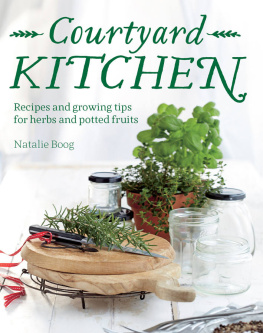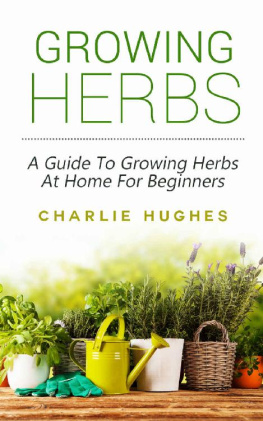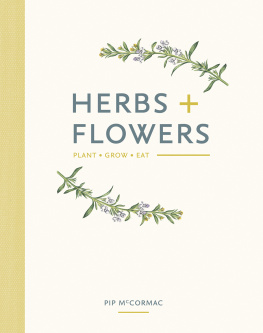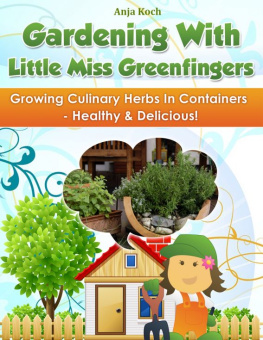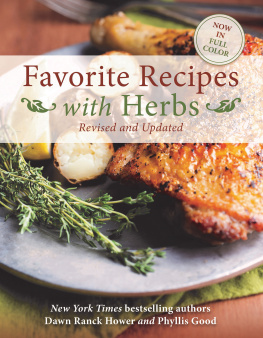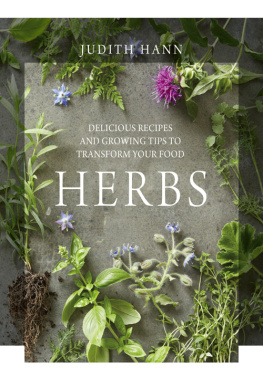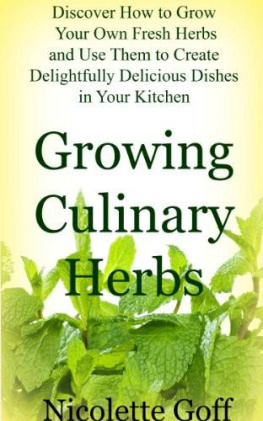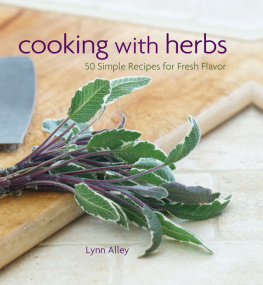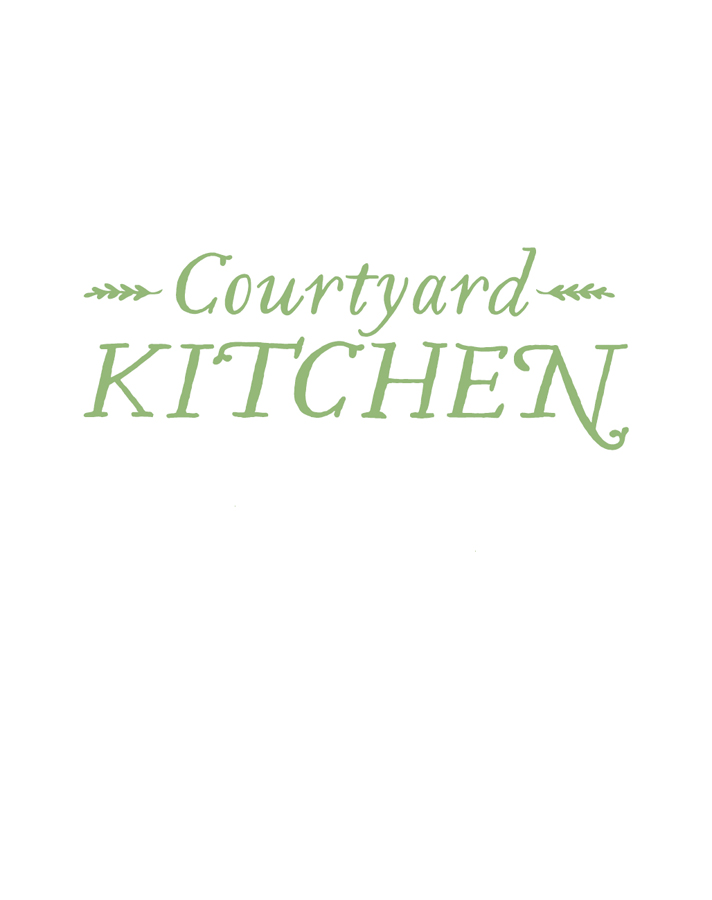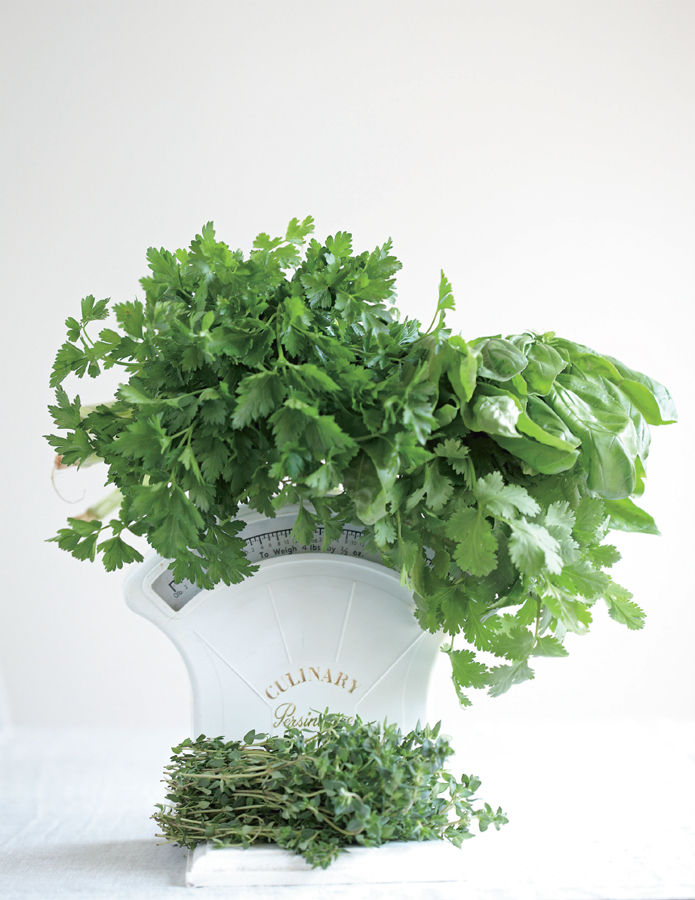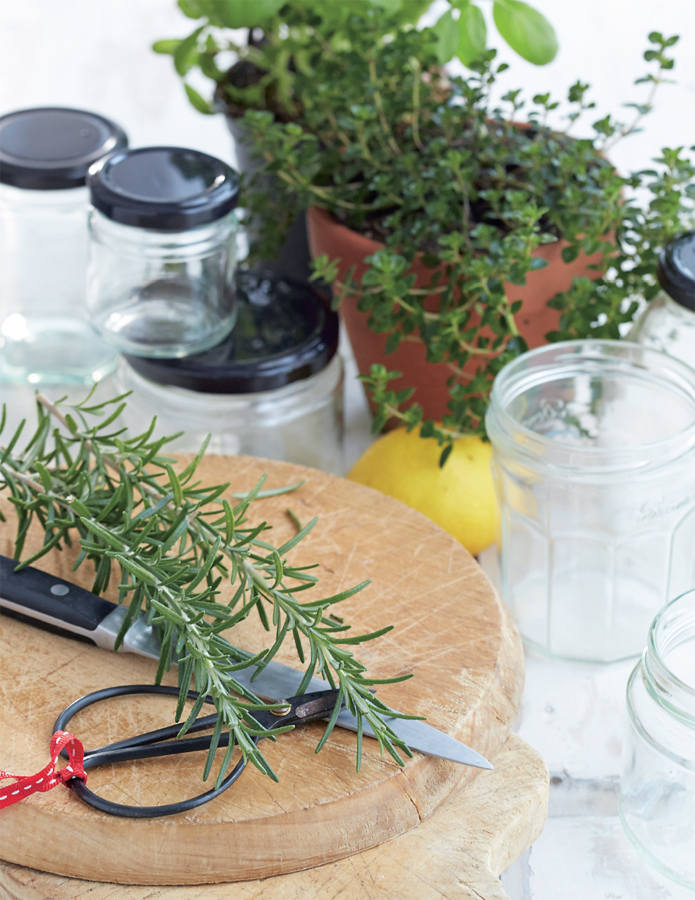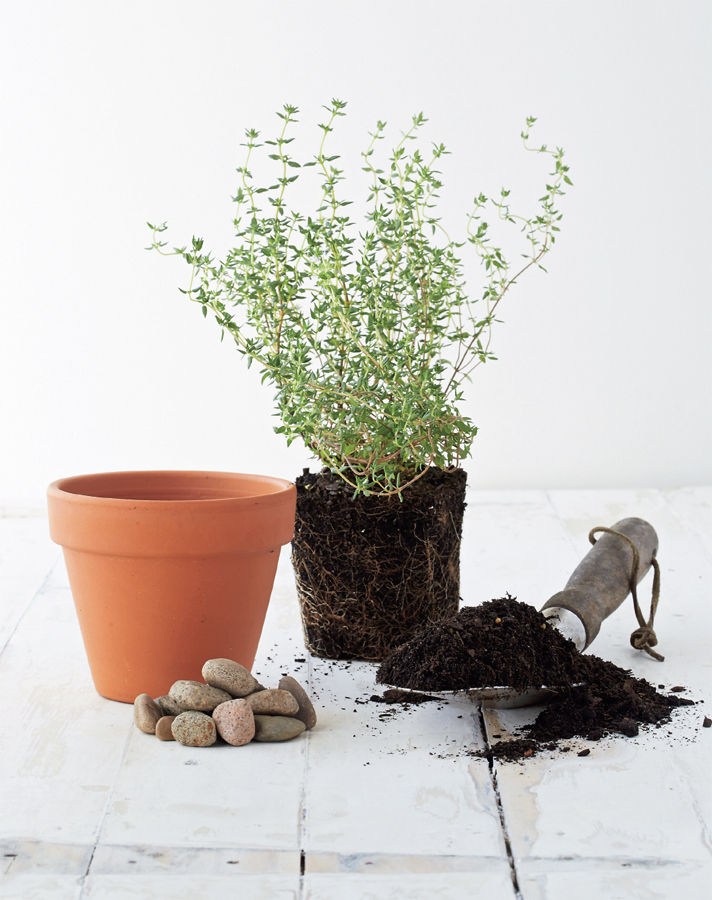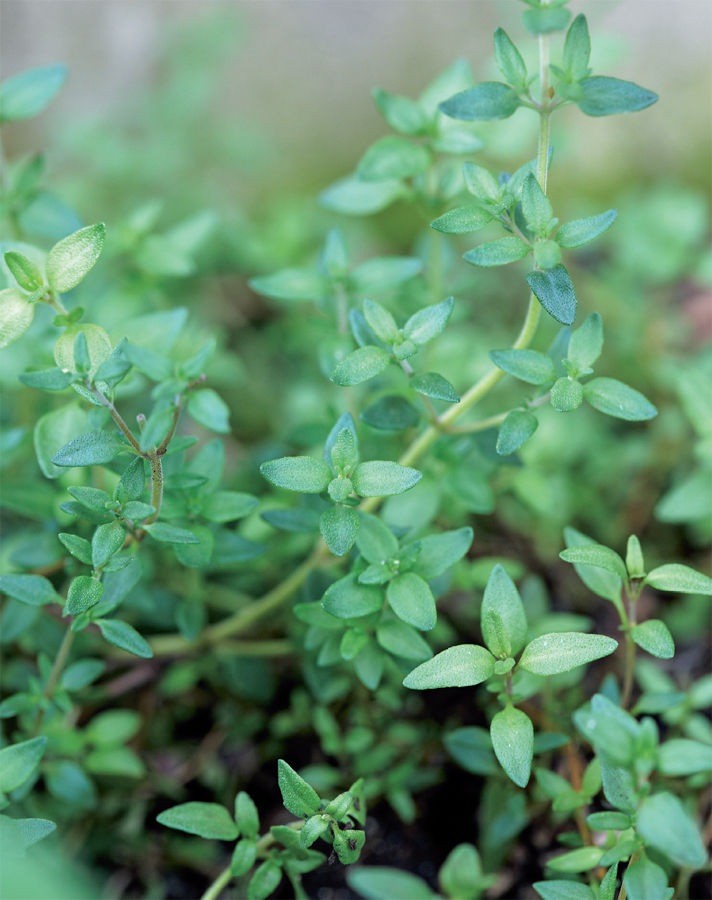Featuring more than 80 inspiring fresh food recipes based around nine different herbs and fruits, youll find plenty of options for creating tempting meals for family and friends.
There are risottos, roasts, pizzas, pastas, salads and soups; recipes for decadent cakes, biscuits, sorbets and other sweet treats all delicious and easy to prepare.
Getting started
Theres so much pleasure in making a delicious dish from something you grew yourself. I was using a lot of herbs in my cooking, and it began to get very expensive to buy them every time. So the simple solution I started growing my own. One by one, the number of pots multiplied and I suddenly found I had lots of different herbs.
As each one came into season, there was often an oversupply. I didnt want to waste these lovely herbs, especially after tending to them so lovingly, but I couldnt find one place to go for recipes that just used basil, or just parsley, for instance. So I started collecting my own recipes and I put together some of my favourites.
I like to cook from scratch and I dont use pre-made meals or readymade bottles of sauce. Cooking from scratch doesnt necessarily take lots of time most of the recipes in this book are easy to make after work during the week, or there are tips on preparing ahead and freezing. My , for example, can be cooked up in one day on the weekend and, if you make enough, it will last the whole year. Ive used it in a number of recipes and I hope youll find more ways to use it as you cook and experiment with your own dishes.
The recipes in the book are varied if you only have a bit of one particular herb, you can still cook something. Or if you have too much, you can use up all the excess at once. Ive also used herbs multiple times, in lots of different combinations, so youll see, in the Parsley chapter, for example, a recipe that will also use coriander (cilantro) and basil.
There are recipes here for everyone. You dont need to be a chef to cook from this book and I hope youll be inspired to plant at least one herb and find a favourite recipe that will be your go-to on a regular basis.
When you care for your herbs, you develop a newfound appreciation for where your food comes from. So often, the simple things in life are the best. A little fresh basil can completely change a pasta dish, or a slice of lemon can bring new life to a piece of fish. Fresh herbs are an instant way to really add flavour and when you have some to cut at your back doorstep, you have a world of flavour at your feet.
Feel free to experiment with what youve got there are no rights and wrongs. If you like the taste, then its right!
Cut the flower heads from basil and coriander to prevent them from going to seed too quickly.
Plan your garden
The most important thing, before starting your herb garden, is to check out your proposed growing area. The perfect spot should get morning sun, partly shaded midday sun and protection from the hot afternoon sun in summer. In winter, you want as much sun as you can get, as its less intense and less hot. Youll also need to protect your plants from frosts in winter.
Rosemary, lemons and thyme will thrive in a place that gets full sun all day; basil, parsley, chillies and strawberries like a sunny spot with a little protection from the fiercest sun; coriander (cilantro) and mint will do better in a slightly shaded position.
I often move my pots of herbs around, depending on the season. Different herbs like different amounts of sun, so no matter what your aspect is like, you should be able to grow something. Even if you dont have an outdoor area, you may still have the perfect sunny windowsill to grow a pot or two.
Pots & potting mix
When it comes to pots or containers, you can be as resourceful and creative as you like, as long as the container has good drainage. Ive seen herbs growing in old boots, buckets, even on cake stands. I like to use terracotta pots they are durable, last a long time and look better with age. However, they do tend to dry out quickly in the summer heat.
I also like to put my pots on garden stands or hang them. Having them higher up keeps slugs and snails off them and also means you can have lots of pots in a small area. You may even want to think about a vertical garden. There are many products on the market now, for hanging or displaying multiple pots, or you can make your own, using a ladder, or plant hangers on a wall, a fence or even your balcony rail. You can also get a hanging pot and hook it over the back of a chair if your space is really limited.
The size of the pot you choose will depend on the size of your growing area and on the herb itself. You can also cultivate a number of herbs together in a single, larger pot. Chilli and rosemary grow really well together, for instance, and parsley will happily share a pot with other herbs that need the same amount of sun and water. Mint, on the other hand, is best left in a pot of its own. It has a tendency to spread and become invasive, so dont plant it in the ground or in a pot with another herb.
When potting your herbs, always put a few pebbles in the bottom of the pot. It helps with drainage and stops the soil running out of the drainage holes.
Always use good quality potting mix, as the soil needs nutrients to feed the plant. For a lemon tree, its best to buy a potting mix designed especially for citrus trees. Normal garden soil is not suitable for pots. Fill the pot with potting mix, and plant your seedlings.
If you pop a rosemary sprig into a glass of water on a sunny windowsill, it will often grow roots.
Seeds or seedlings?
I usually prefer to buy seedlings already established. However, having said that, I often notice that the pot in which a herb has gone to seed especially basil, parsley and coriander (cilantro) will spontaneously sprout seedlings the following year, and these plants seems to be much hardier than bought seedlings. I always let my parsley go to seed naturally in this way and regrow on its own, the following year.

